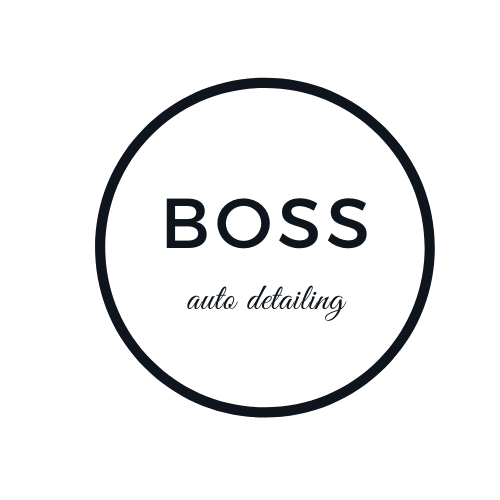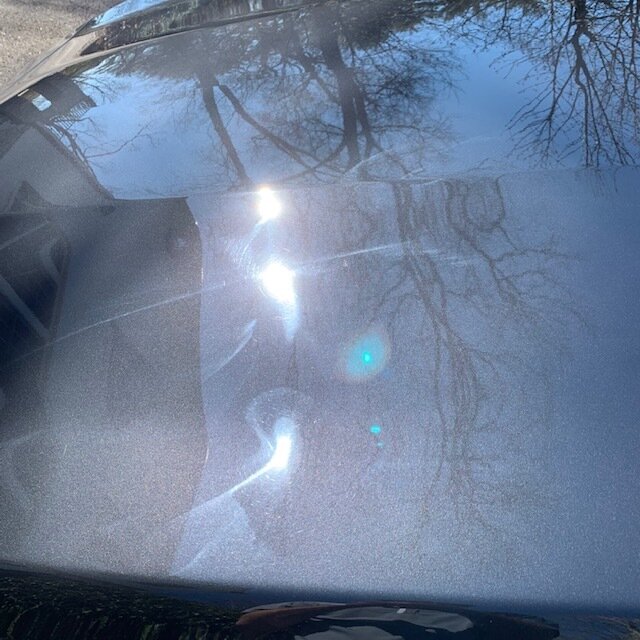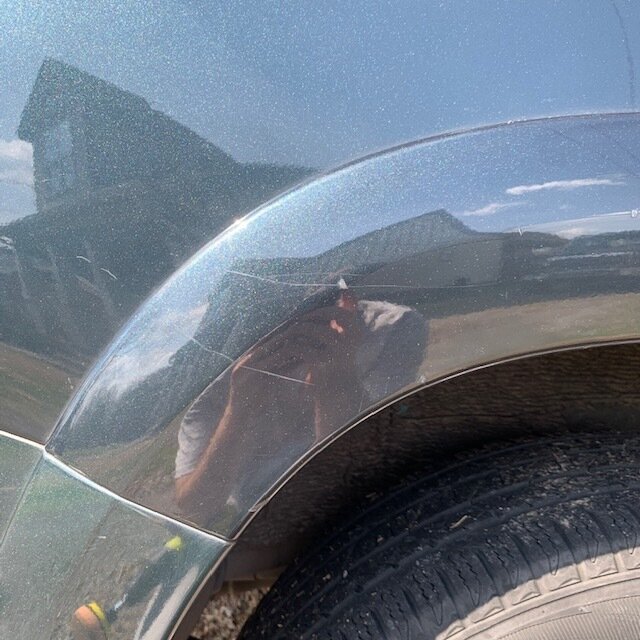In this post I’m going to cover the top 10 most common types of defects found in automotive paint. Some are easily fixed, some are more difficult, and some require a full repaint. Nonetheless, being able to recognize them is extremely beneficial in order to properly address them.
Holograms
Holograms are small scratches formed from the uniform rotation of a rotary polisher. They are typically not deep and easily removed by polishing with a dual-action random orbital polisher.
2. DA Haze
These are small “tick mark” scratches caused from a harsh compound with a dual-action random orbital polisher. They are easily removed by refining the paint with a softer pad and lighter polishing liquid.
Photo by Mike Phillips @ autogeekonline.net
3. Oxidation
The rough, hazy look of typically older vehicles with single stage paint that has not been maintained and protected from the sun’s UV rays over time. The single stage paint becomes dry and dull but can typically be removed by polishing off the dead layer of paint.
Photo by Mike Phillips @ autogeekonline.net
4. Clear Coat Failure
This is the flaking and delaminating of old, oxidized clear coat on a vehicle. The only way to fix this issue is with a complete sanding and respray of the panel.
Photo by Mike Phillips @ meguiarsonline.com
5. RIDS (Random Isolated Deep Scratches)
These are the most noticeable defect by the average person. When someone says they have a scratch on their car, this is typically what they mean. Depending upon the depth of the scratch, they can either be removed or improved without removing too much clear coat. However, this is not always possible.
6. Swirls
These are likely the most common defect on any vehicle. They are caused from improper washing and drying techniques and often automatic car washes; they can be removed or improved with most paint correction processes.
Photo by ariel_carA_ @ meguiarsonline.com
7. Rock Chips
Paint touch-up is the main solution for rock chips; however it is very difficult to achieve a like-new finish. The main goal is to protect the damaged area and prevent rust.
Photo by Mike Phillips @ autogeekonline.net
8. Hard Water Spots
These are often caused by sprinkler systems or letting water dry onto the paint when washing your vehicle. The defect is actually the minerals left behind after the water evaporates. Often times they can be removed with a mineral deposit remover. If left too long however, they can etch into the clear coat requiring sanding and polishing to completely remove.
Photo by Mike Phillips @ autogeekonline.net
9. Bird Poo/Tree Sap Etching
Bird droppings and tree sap become very acidic and cause a chemical reaction on the clear coat when left in the sun too long causing a stain and/or etching in the clear coat. If left too long they can require sanding and polishing as well to remove, but again not always completely removable with the thin clear coats today.
10. Scuff/Paint Transfer
A scuff or paint transfer is different from a typical scratch because it is actually on the surface of the clear coat, rather than in or below it. A paint transfer will typically happen from rubbing against something heavily painted like a parking lot pole, side of a garage, or even a light bump against another vehicle. A scuff is typically from rubbing against something soft like rubber or plastic. Both defects can often be removed with a simple polishing procedure.











